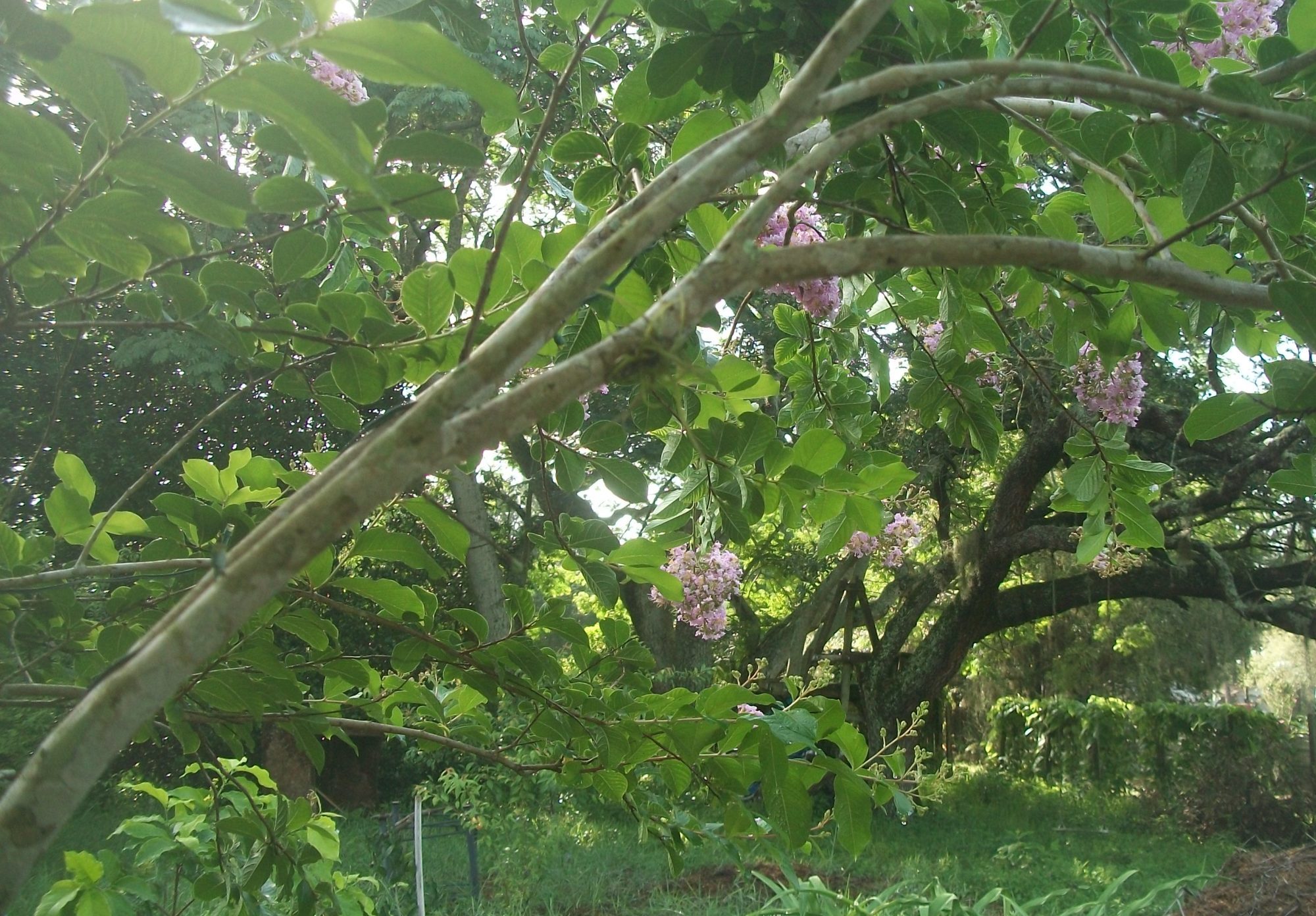Yesterday, Christmas Day, I planted a papaya circle. This is a type of pit gardening, where you dig a circle approximately a yard deep and a yard in diameter, and you mound the soil up around the edges.

The pit is for collecting items for composting and for collecting water.
I had a papaya that was overripe and was starting to go bad, so I opened it up, splitting it lengthwise with a knife, and then scooped out the seeds from inside and spread them near the top of the mounded soil around the circle and then covered them lightly with soil. Then I watered the pit and watered the mound well.
It is an odd time of the year to be planting papaya seeds. If we get a frost, they may die, but I am always experimenting and pushing the envelope. This time, it is not entirely a shot in the dark. From past experience, I know that papaya seeds planted this way germinate very readily, nearly 100 percent, and are easy to grow and are resilient.
Below are some of my bigger ones that I grew from seed and that now have fruit on them: one behind the white bucket, and the other two in front of the white fence:


These papayas were so resilient. They were growing out of a holes of a pot where I had reused the soil that I had planted them in, and they hung on through the winter last year. By the time spring came, I figured that if they were that determined to grow, I would just put them in the ground. I did so, and they kept on growing.
The pit method I am using now is based on a combination of: 1) my past experience in growing papayas from seed; 2) some videos I have watched recently about planting a papaya circle, including from one of my favorite natural farmers, John Kaisner; 3) another video I watched recently about another favorite, David Goodman (David the Good) showing how to plant papaya seeds (which I already knew) and in another video about planting jackfruit, emphasizing that starting fruit tree seeds in the ground is the best method. So, rather than plant the seeds somewhere expecting to transplant them, I just planted them where I expect they will stay.
The papaya trunk size is large and sturdy. These papayas weathered Hurricane Irma in September.

Some people cut the trunk completely off about five feet from the ground to force the papaya to stay short, to make it more sturdy and less likely to topple over, as well as to make the fruit easier to reach, but I have not tried that yet.
Botanically, the papaya plant is identified as Carica Papaya. Papaya plants can be male, female, or hermaphrodite. Once the seeds sprout, I will thin them out, probably to about six nice specimens, among which there are bound to be both a mixture of genders. Papaya leaves are edible, so even if a plant bears no fruit, it has usefulness in an edible food forest.
Antlions
As it is, my papaya circle looks kind of like an antlion’s trap. Antlions are so plentiful here, probably because ants are plentiful here.
Antlion Death Trap | National Geographic (Duration 2:19)
In building and tending my forest garden, I try to make beneficial insects at home so they can do what they do naturally and take care of the not-so-beneficial insects.
[May 24, 2020: That papaya circle experiment was a failure. In forest gardening, you have to not be afraid of failures because you will likely have many, especially in the beginning. Now, I have another overripe papaya, and I am getting ready to try out another papaya planting experiment. This time of year is far more opportune for planting papaya seeds. I will let you know how it goes!]
